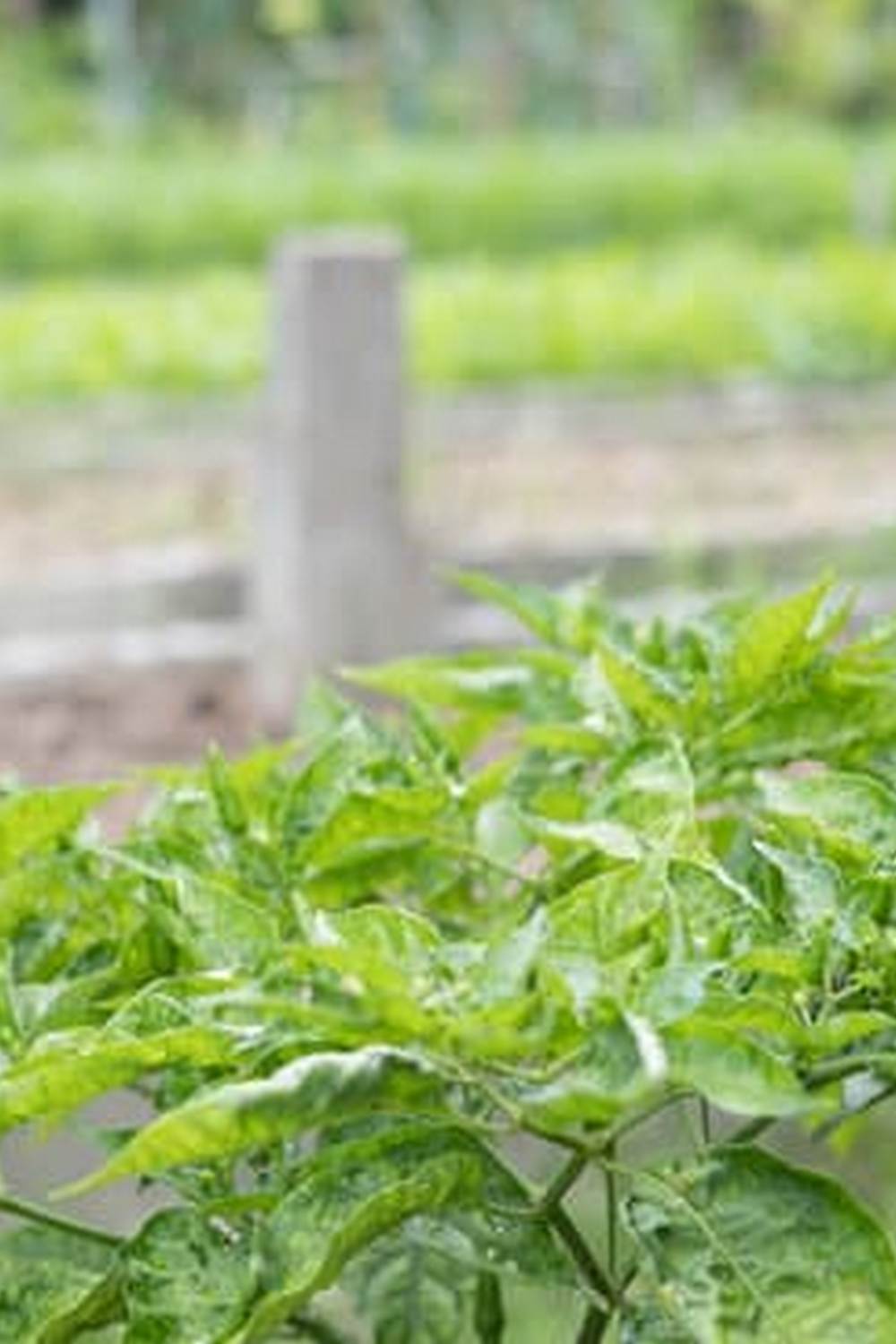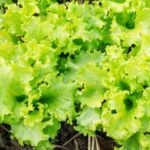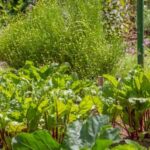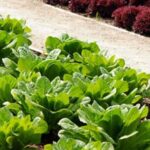Are red ants bad for vegetable gardens? Understanding the impact of red ants on your vegetable garden is crucial for maintaining a healthy and thriving crop. Red ants can either be beneficial or detrimental to your vegetable garden, depending on their numbers and behavior.
In this article, we will explore the types of red ants commonly found in vegetable gardens, how they affect the growth of vegetables, signs that indicate red ants are causing damage, and methods to control their population. Whether you prefer natural and organic approaches or chemical methods, finding the right balance with red ants in your vegetable garden is essential for successful gardening.
Red ants can pose a threat to the health and productivity of your vegetable garden if not properly managed. It’s important to familiarize yourself with the different types of red ants commonly found in gardens, as some species are more destructive than others. Understanding their behavior and impact on vegetables will help you implement effective control measures to mitigate any potential damage caused by red ant infestations.
When it comes to the growth and development of vegetables, red ants can significantly hinder their progress. From the disruption of root systems to transmitting diseases, these tiny creatures can wreak havoc on your plants if left unchecked. Recognizing the signs of damage caused by red ants is essential for early intervention and preventing further harm to your vegetable garden.
In the following sections, we will delve into natural and organic methods as well as chemical approaches to controlling red ant populations in vegetable gardens. By understanding these options, you can make informed decisions on how best to manage and maintain a harmonious relationship with red ants in your vegetable garden.
Types of Red Ants Commonly Found in Vegetable Gardens
Red ants are a common pest found in many vegetable gardens, and it is important to understand the different types of red ants commonly found in these environments. Here are some of the most frequently encountered red ant species in vegetable gardens:
1. Fire Ants (Solenopsis spp.): Fire ants are known for their aggressive behavior and painful stings. They build large mounds in the soil, creating an unsightly and potentially hazardous environment in vegetable gardens.
2. Red Imported Fire Ants (Solenopsis invicta): This species is particularly notorious for its painful stings and invasive nature. Red imported fire ants can cause significant damage to vegetable plants and may even pose a threat to gardeners.
3. European Fire Ants (Myrmica rubra): These red ants are often found in moist areas of vegetable gardens, such as near watering systems or irrigation pipelines. They can contribute to soil disruption and affect the growth of vegetables.
Understanding the specific species of red ants present in your vegetable garden can help you determine the best methods for control and management.
It is important to note that while all red ant species have similar characteristics, they can vary in their behavior and impact on vegetable gardens. Identifying the specific type of red ant infesting your garden is crucial in developing an effective strategy for control and prevention.
How Red Ants Affect the Growth of Vegetables
Red ants can have a significant impact on the growth and health of vegetables in gardens. Their presence can disrupt the natural balance of the ecosystem and cause damage to plants, which in turn affects the overall yield of the garden. Understanding how red ants affect the growth of vegetables is essential for implementing appropriate control measures and maintaining a thriving garden.
Effects on Plant Roots
One of the most common ways red ants affect the growth of vegetables is through their impact on plant roots. Red ants are known to build extensive underground tunnels and nests, which can disturb the root systems of vegetables. This disruption can hinder the plants’ ability to absorb water and nutrients from the soil, leading to stunted growth and decreased productivity.
Damage to Foliage
In addition to affecting plant roots, red ants can also cause direct damage to foliage. Some species of red ants are known to feed on leaves and tender shoots, causing wilting, yellowing, or even defoliation in extreme cases. This can weaken the overall health of vegetable plants and make them more susceptible to diseases and other pests.
Potential Impact on Pollinators
Red ants may also have an indirect impact on vegetable growth by affecting pollinators such as bees and butterflies. Their aggressive nature can interfere with these beneficial insects’ activity, resulting in reduced pollination rates for vegetable crops. This can ultimately lead to poor fruit set and lower yields in the garden.
Understanding how red ants affect vegetable growth underscores the importance of managing their populations effectively in order to maintain a flourishing garden. By addressing these impacts, gardeners can take proactive measures to mitigate any potential damage caused by red ants while promoting healthy plant growth and bountiful harvests.
Signs That Red Ants Are Causing Damage to Your Vegetable Garden
Red ants can be a nuisance in vegetable gardens, and their presence can often lead to damage to your plants. One of the most common signs that red ants are causing damage to your vegetable garden is the appearance of wilted or discolored plants.
Red ants feed on plant sap, which can result in stunted growth and yellowing of leaves. If you notice these symptoms in your vegetable garden, it may be an indication that red ants are present and causing harm to your plants.
Another sign of red ant damage in vegetable gardens is the presence of ant mounds near the base of your plants. These mounds can disrupt the root systems of your vegetables, leading to poor nutrient uptake and overall reduced plant health. Additionally, if you observe a decline in the productivity of your vegetable garden without any obvious explanation, red ants could be the culprit.
Furthermore, if you see red ant trails running up and down the stems of your plants, it’s a clear sign that they are actively foraging for food. This constant feeding by red ants can weaken the plant’s structure and make it more susceptible to other pests and diseases.
| Signs of Red Ant Damage | Impact on Vegetable Garden |
|---|---|
| Discolored or wilted plants | Stunted growth, yellowing leaves |
| Ant mounds near plant base | Disruption of root systems, poor nutrient uptake |
| Decline in garden productivity | Possible result of red ant damage |
Natural and Organic Methods to Control Red Ant Populations in Vegetable Gardens
Red ants can be a nuisance in vegetable gardens, but there are natural and organic methods to control their populations without resorting to harsh chemicals. Here are some effective ways to manage red ants in your vegetable garden:
- Mulch: Using mulch in your vegetable garden can help deter red ants from making their home in the soil. Mulch acts as a barrier and makes it difficult for red ants to establish their colonies.
- Companion planting: Some plants naturally repel red ants, such as mint, tansy, and garlic. Intercropping these plants with your vegetables can help keep red ants at bay.
- Diatomaceous earth: This natural substance is made from fossilized diatoms and works by dehydrating the exoskeleton of insects such as red ants. Sprinkling diatomaceous earth around the perimeter of your garden can help control red ant populations.
It’s important to remember that these natural and organic methods may take time to show results, so patience is key when using them. Additionally, it’s also crucial to regularly monitor your garden for any signs of red ant activity and adjust your control methods accordingly.
By incorporating natural and organic control methods into your gardening routine, you can effectively manage red ant populations without harming the environment or beneficial insects in your vegetable garden.
Chemical Methods to Control Red Ant Populations in Vegetable Gardens
Overview of Chemical Control
When natural and organic methods have proven unsuccessful, some gardeners may consider using chemical methods to control red ant populations in their vegetable gardens. It is important to note, however, that the use of chemical pesticides should be a last resort due to the potential harm they can cause to both the environment and beneficial insects. Before resorting to chemical control, it is essential for gardeners to thoroughly research and understand the potential risks and benefits associated with these methods.
Types of Chemical Pesticides
There are various types of chemical pesticides available for controlling red ant populations in vegetable gardens. Some common options include insecticidal sprays, granules, baits, and dusts. These pesticides work by either directly killing the ants upon contact or through ingestion, ultimately leading to the collapse of their colonies. It is crucial for gardeners to carefully follow the instructions provided on the pesticide labels, including application rates and proper safety precautions.
Considerations and Potential Risks
Before opting for chemical control methods, gardeners should consider the potential risks associated with these products. Chemical pesticides can not only harm non-target organisms such as bees and other beneficial insects but can also contaminate soil and water sources if not used responsibly.
Additionally, repeated use of pesticides can lead to the development of pesticide resistance in ant populations. Therefore, it is recommended that gardeners consult with a professional or extension agent before deciding on using chemical methods for red ant control in their vegetable gardens.
The Potential Benefits of Red Ants in Vegetable Gardens
Red ants, despite their reputation as garden pests, can actually provide some benefits to vegetable gardens. One of the most notable advantages of having red ants in your garden is their ability to aerate the soil. Red ants construct extensive tunnel systems underground, which helps improve soil aeration and drainage. This can benefit the overall health and growth of vegetable plants by allowing for better root development and nutrient uptake.
Another potential benefit of red ants in vegetable gardens is their role in controlling other insect pests. Red ants are known to prey on certain destructive garden pests such as caterpillars, beetles, and other insect larvae that can damage vegetable crops. By keeping these pest populations in check, red ants may contribute to the overall pest management in the garden.
Additionally, some research has suggested that the presence of red ants in vegetable gardens may help improve pollination. As these ants move around the garden in search of food sources, they may inadvertently aid in the pollination process by transferring pollen from one plant to another. While this may not be their primary function, it is an interesting potential benefit to consider when evaluating red ant populations in vegetable gardens.
| Potential Benefits | Description |
|---|---|
| Soil Aeration | Red ants construct tunnels that improve soil aeration and drainage. |
| Pest Control | Red ants prey on certain destructive garden pests, helping to manage pest populations. |
| Pollination Aid | Research suggests that red ants may aid in pollination as they move between plants. |
Conclusion
In conclusion, while red ants can pose a threat to vegetable gardens by causing damage and affecting plant growth, it is possible to find a balance that allows them to coexist with your crops. By understanding the types of red ants commonly found in vegetable gardens and recognizing the signs of damage they can cause, gardeners can take proactive measures to control their population.
Natural and organic methods such as using diatomaceous earth or introducing natural predators like ladybugs can help keep red ant populations in check without resorting to harmful chemicals. Additionally, practicing good garden hygiene and removing potential nesting sites can discourage red ants from establishing colonies in vegetable beds.
It’s important for gardeners to weigh the potential benefits of having red ants in their vegetable gardens as well. Red ants can aid in pollination and contribute to soil aeration, potentially improving overall garden health. Finding the right balance with red ants ultimately comes down to careful observation, implementing environmentally-friendly control methods, and embracing their potential role in the garden ecosystem. By doing so, you can ensure a thriving vegetable garden while maintaining ecological harmony.

If you’re looking to get into vegetable gardening, or are just looking for some tips on how to make your current garden better, then you’ve come to the right place! My name is Ethel and I have been gardening for years. In this blog, I’m going to share with you some of my best tips on how to create a successful vegetable garden.





